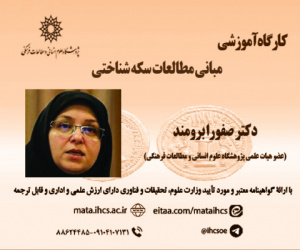سنتزپژوهی مولفه های حکمرانی دانشگاهی با رویکرد تحول گرا در راستای برنامه ریزی منطقه ای و توسعه پایدار (مقاله علمی وزارت علوم)
درجه علمی: نشریه علمی (وزارت علوم)
آرشیو
چکیده
کلیدی ترین عامل تحولات؛ تحولات فناورانه، تحولات اجتماعی و اقتصادی و تحولات جهانی شدن است که کلیه ساحت های زندگی بشر از آن تاثیر پذیرفته و مبنای مناسبات زندگی خود را بر اساس آن تحولات طرح ریزی کرده اند. از این رو، تحولات حکمرانی آموزش عالی نیز از این قاعده مستثنی نبوده و بلکه تحت تاثیر آن قرار گرفته است. هدف از این مطالعه، بررسی مؤلفه ها و عناصر حکمرانی دانشگاهی است و از طریق شناخت رابطه و نقش هر یک از آن ها، الگوی بومی دانشگاه های ایران طراحی گردد. در این پژوهش بر اساس سنتزپژوهی و روش فرامطالعه (فراترکیب)، 87 مؤلفه (شاخص) از 40 مقاله معتبر بدست آمد که با استفاده از تکنیک دلفی توسط 30 نفر از خبرگان مورد تایید قرار گرفت. پس از تحلیل شاخص های حکمرانی در آموزش عالی، مشخص شد که این شاخص ها در شش بعد کلان تر و در 2 بخش عوامل درونی (سیستم های مدیریتی و فرآیندهای آن، سیستم باز و پاسخگو و مسئولیت پذیر، مشارکت ذی نفعان داخلی) و عوامل بیرونی (حاکمیت و استقلال نهادی، استقلال مالی،آزادی اکادمیک، مشارکت ذی نفعان خارجی) جای می گیرند. برای درک پدیده آموزش عالی توجه به ریشه های نهادی و تعادل قدرت در نظام های آموزش عالی مدرن، مثلث کلارک است که میان الگوی کنترل دولتی، الگوی هومبولتی(حکمرانی دانشگاهیان) و الگوی بازار محور آمریکایی – انگلیسی تمایز قائل می شود. با در نظر گرفتن ابعاد حکمرانی تحول گرا در نظام آموزش عالی و مبانی نظریات و تحقیقات جدید، نتیجه پژوهش بیانگر اینست که تک مدل حکمرانی وجود ندارد و بایستی طراحی و گزینش مدل هایSynthesizing the components of university governance with a transformational approach in the direction of regional planning and sustainable development
The most key factor of changes; Technological developments, social and economic developments, and globalization developments are the ones that all areas of human life have been affected by and have planned the basis of their life relationships based on those developments. Therefore, the developments of higher education governance are not exempted from this rule, but have been influenced by it. The purpose of this study is to investigate the components and elements of university governance and to design the native model of Iranian universities through understanding the relationship and role of each of them. In this research, based on synthesis research and meta-study (meta-composition), 87 components (indices) were obtained from 40 valid articles, which were confirmed by 30 experts using the Delphi technique. After analyzing the governance indicators in higher education, it was found that these indicators are in six larger dimensions and in 2 parts: internal factors (management systems and its processes, open and responsive and responsible system, participation of internal stakeholders) and external factors (governance and institutional independence, financial independence, academic freedom, participation of foreign stakeholders). To understand the phenomenon of higher education, paying attention to the institutional roots and balance of power in modern higher education systems is Clark's triangle, which distinguishes between the government control model, the Humboldt model (rule by academics) and the American-English market-oriented model. Taking into account the dimensions of transformational governance in the higher education system and the foundations of new theories and researches, the result of the research shows that there







